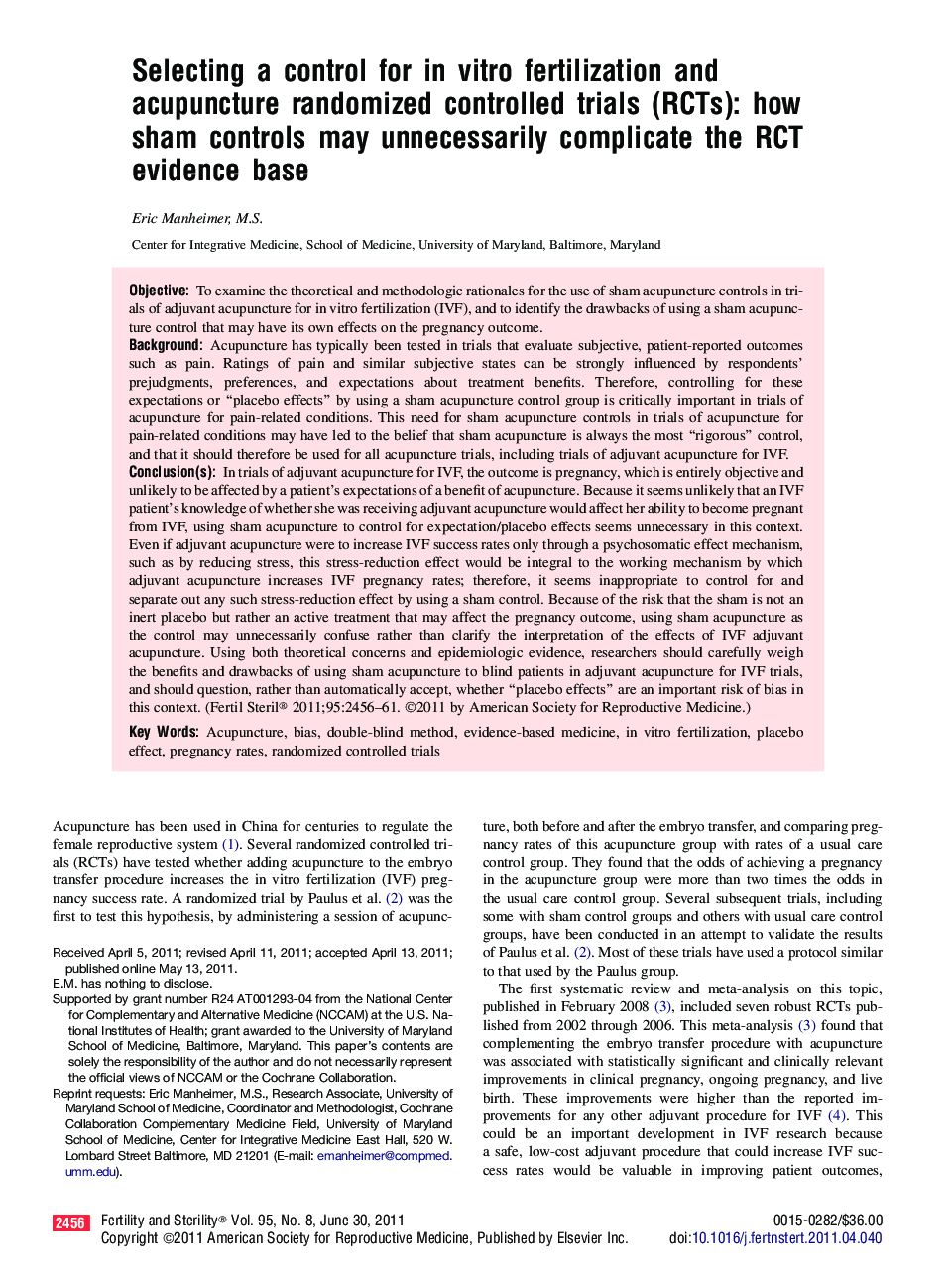| کد مقاله | کد نشریه | سال انتشار | مقاله انگلیسی | نسخه تمام متن |
|---|---|---|---|---|
| 3932162 | 1253322 | 2011 | 6 صفحه PDF | دانلود رایگان |

ObjectiveTo examine the theoretical and methodologic rationales for the use of sham acupuncture controls in trials of adjuvant acupuncture for in vitro fertilization (IVF), and to identify the drawbacks of using a sham acupuncture control that may have its own effects on the pregnancy outcome.BackgroundAcupuncture has typically been tested in trials that evaluate subjective, patient-reported outcomes such as pain. Ratings of pain and similar subjective states can be strongly influenced by respondents’ prejudgments, preferences, and expectations about treatment benefits. Therefore, controlling for these expectations or “placebo effects” by using a sham acupuncture control group is critically important in trials of acupuncture for pain-related conditions. This need for sham acupuncture controls in trials of acupuncture for pain-related conditions may have led to the belief that sham acupuncture is always the most “rigorous” control, and that it should therefore be used for all acupuncture trials, including trials of adjuvant acupuncture for IVF.Conclusion(s)In trials of adjuvant acupuncture for IVF, the outcome is pregnancy, which is entirely objective and unlikely to be affected by a patient’s expectations of a benefit of acupuncture. Because it seems unlikely that an IVF patient’s knowledge of whether she was receiving adjuvant acupuncture would affect her ability to become pregnant from IVF, using sham acupuncture to control for expectation/placebo effects seems unnecessary in this context. Even if adjuvant acupuncture were to increase IVF success rates only through a psychosomatic effect mechanism, such as by reducing stress, this stress-reduction effect would be integral to the working mechanism by which adjuvant acupuncture increases IVF pregnancy rates; therefore, it seems inappropriate to control for and separate out any such stress-reduction effect by using a sham control. Because of the risk that the sham is not an inert placebo but rather an active treatment that may affect the pregnancy outcome, using sham acupuncture as the control may unnecessarily confuse rather than clarify the interpretation of the effects of IVF adjuvant acupuncture. Using both theoretical concerns and epidemiologic evidence, researchers should carefully weigh the benefits and drawbacks of using sham acupuncture to blind patients in adjuvant acupuncture for IVF trials, and should question, rather than automatically accept, whether “placebo effects” are an important risk of bias in this context.
Journal: Fertility and Sterility - Volume 95, Issue 8, 30 June 2011, Pages 2456–2461